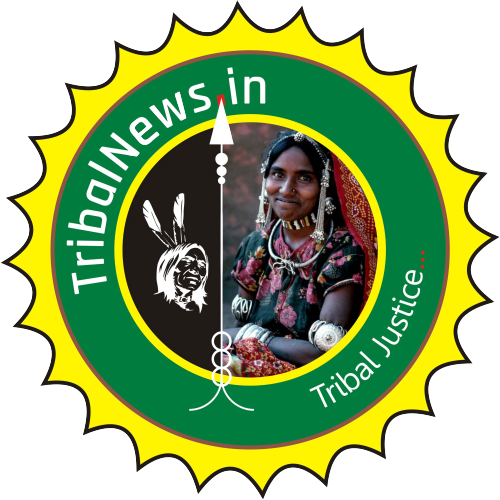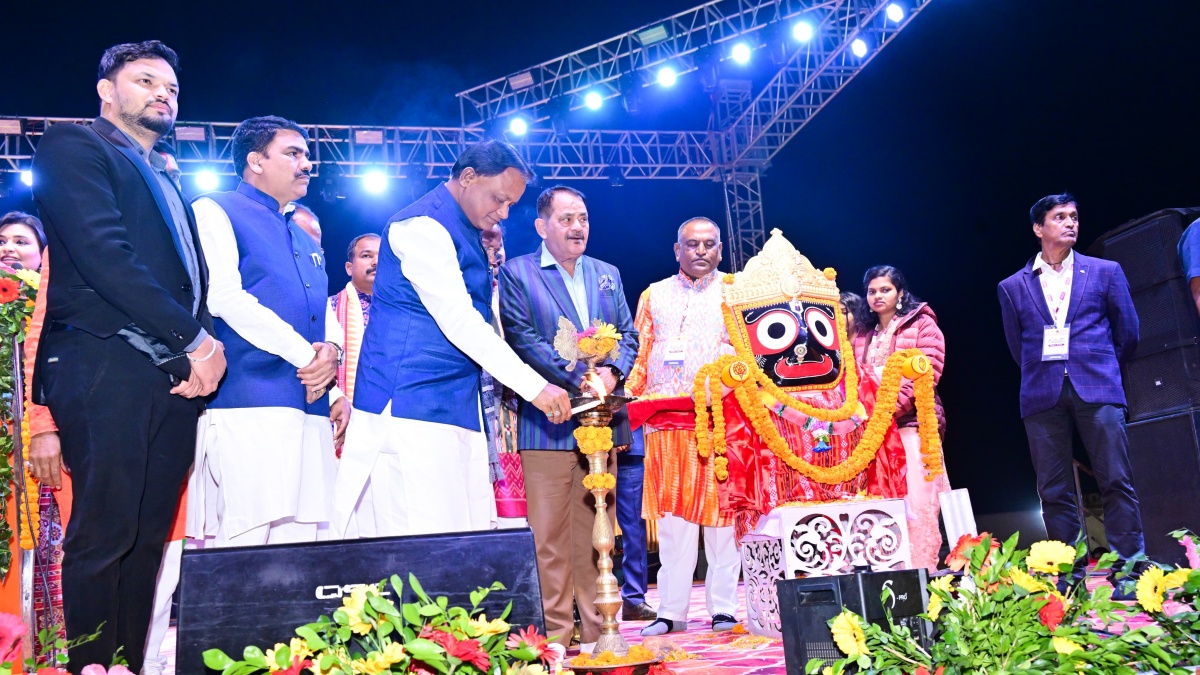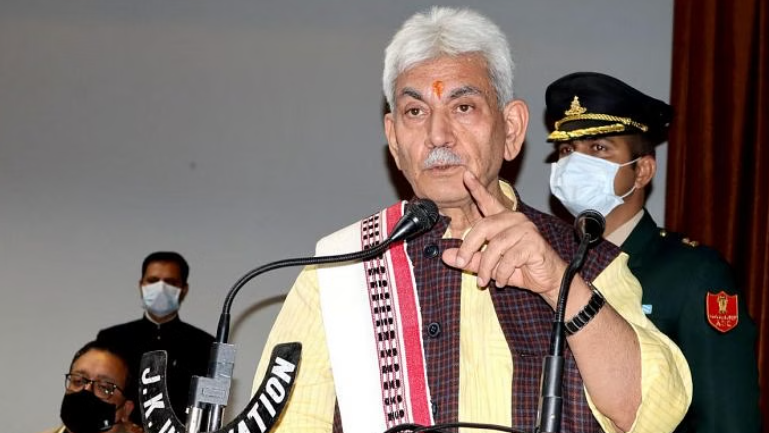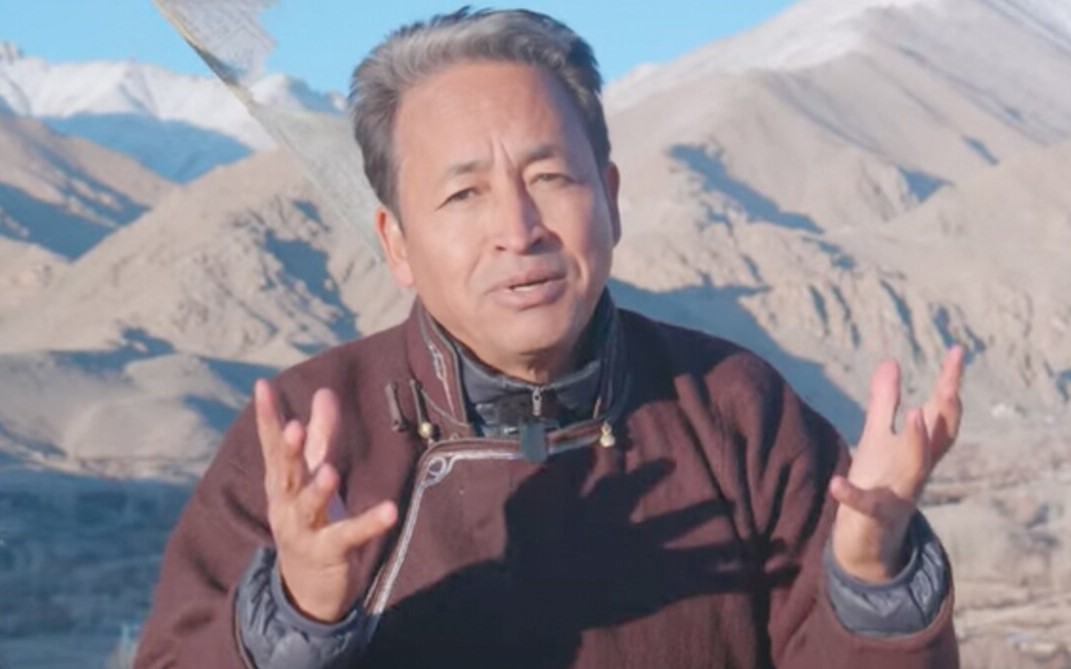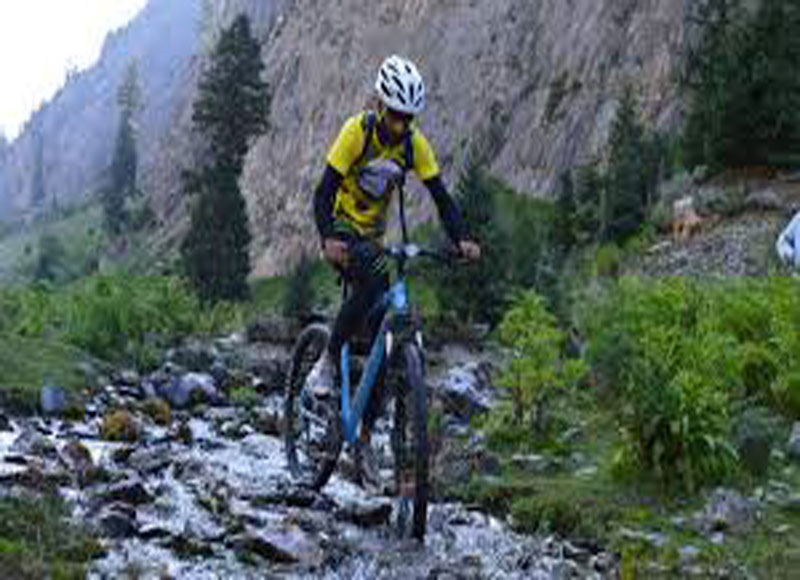
Kashmir tribes report by Kashmir correspondent
گاندربل ضلع
History of GANDERBAL
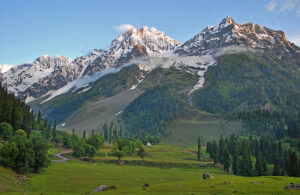
District Ganderbal is located between 34.23° N Longitude and 74.78° E Latitude on the North of District Srinagar from which it was carved out and given the status of District on Ist April 2007 .It mostly stretches from south – west to North-east with a length of 125 kms and this stretch has a width of around 10-20 kms at an elevation of 1650 to 3000 meters above the Mean Sea Level (MSL). Nearly 70% area of the District is hilly and semi-hilly. Some areas remain inaccessible for quite some time during winter.
The Ganderbal town is the district headquarter and has derived its name from a famous spring Ganderbhavan. With the passage of time the name got changed into Ganderbal from Gander bhavan, now recognized name and used officially. In the olden days the territory of Ganderbal has acted as gate way to the central Asia by constituting one of the most important station of the erstwhile silk-route
In addition Islamic influence on Kashmir found its way through Sindh valley. Hazrat Shahi Hamdan, Rinchan Shah the first ruler of Kashmir and Mirza Hyder Daughlat have entered Kashmir through Ganderbal popularly known as Sindh valley those days because river Sindh traverses course of about 100 kms through the district with a basin exceeding 1556 kms. The district covers the entire water shed of the river so the Sindh valley and the District has become synonymous.
District Ganderbal holds some of the scared pilgrimage sites like the Holy Amarnath cave, the serene spring of Kherbhawani. With the presence of tourist resort Sonamarg and Mansbal lake on its fringes, Qamar Sahib and Baba Hyder(RA) Tullamula in its lap and Sindh stream adding its charm and famousness, can contribute to the emergence of this area both as recreational and pilgrim oriented. An easy approach to the Amarnathji cave has made the District World renowned.
How to Reach: By Road:Ganderbal district is well connected by road network. It is located about 20 km from Srinagar, about 290 km from Jammu. National Highway 1A passes through the district connecting Leh and Kargil. Regular bus services are available to major cities of Jammu & Kashmir.
By Train:Nearest railway station is at Jammu which is around 290Km from Ganderbal District. Udhampur Railway Station is around 220 km from Ganderbal District.
By Air:The nearest airport to Ganderbal District is located at Srinagar which is at a distance of 33 Km.
Culture & Heritage
Cultural heritage of Kashmir is as multi-dimensional as the variegated backdrop of its physical exuberance which has nursed and inspired it all along. Its sanctity and evergreen stature can be conveniently inferred from the chaste shimmering snow, with its virgin demeanour top to toe, adorning the towering peaks of its mountainous periphery. Mellowing kisses of the sun endow these summits with a rosy blush lending perennial health to our warbling brooks, roaring waterfalls and sedate and solemn lakes. To crown all, this very nectarine glow has most meaningfully groomed our mental attitude to glean unity amidst seeming diversity.
Culture is always in a flux and ferment. It is a non-stop mental journey with no mile-posts to cool its heels upon. It is, precisely speaking, the cumulative expression of the values enshrined in the heart-beats of the denizens of this Happy Valley. The irresistible stamp of Buddhist compassion, Hindu tolerance and Muslim Zest for life is most unmistakably discernible from the attainments of Kashmiri mind and intellect.
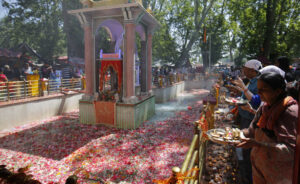
One of the most important parts of the cultural identity of the Kashmiri people is the Kashmiri (Koshur) language. This language is spoken only in the Valley of Kashmir by the Kashmiri Pandits and Kashmiri Muslims. Besides language, Wazwan and culture has been greatly influenced by Central Asian and Persian culture. Kashmiri is an Indo-Aryan (Dardic subgroup) language close to Central Asian Avestan-Persian. Cultural music and dance like Wanvun, Roaff, carpet/shawl weaving |Kaleenbafi and Koshur Sufiana forms a very important part of Kashmiri identity. Kashmir has witnessed many spiritual gurus who migrated from their land to Kashmir. Kashmir has also even witnessed the birth of some of the great poets and suifs of all time like Lal Daed, Sheikh-ul-Alam, Habba Khatoon and many more; and is regarded as Peer Vaer (a place or land of spiritual gurus). It is important to note that Kashmiri culture is predominantly followed only in the Kashmir valley and Doda of the Chenab region. Jammu and Ladakh have their own distinct cultures that are very different from that of Kashmir.
The Dumhal is a famous dance in the Kashmir valley, performed by men of the Wattal region. The women perform the Roaff, another traditional folk dance. Kashmir has been noted for its fine arts for centuries, including poetry and handicrafts. Shikaras, traditional small wooden boats, and houseboatsare a common feature in various lakes and rivers across the Valley. Kashmiri culture is defined in terms of religious values, Kashmiri language, literature, cuisine and traditional values of mutual respect. The overwhelming majority of Kashmiris are Muslims and Islamic identity plays a very important role in the daily lives of people. Kashmiris across the religious divide have for centuries shared cordial and friendly ties. Kashmiri poets and writers like Mehjoor, Abdul Ahad Azad, etc. enriched the literature with their poetry. Kashmiri cuisine holds a unique place among different world cuisines. Salted tea or Noon Chai also called Sheer Chai is the traditional drink and is cooked in a Samavar, a Kashmiri tea-pot. Kashmir has been noted for its fine arts for centuries, including poetry and handicrafts. Shikaras, traditional small wooden boats, and houseboats are a common feature in various lakes and rivers across the Valley. Kehwa, traditional green tea with spices like cardamom, Saffron and almond, is served on special occasions and festivals. Kashmiri weddings are regarded incomplete without the Kashmiri traditional food known as Wazwan, which is typically spicy food cooked by the traditional cooks (Waz). Wazwan is a multi-course meal in which almost all the dishes are meat-based.
Culture of Ladakh is famous for its unique Indo-Tibetan culture. Chanting in Sanskrit and Tibetan language forms an integral part of Ladakh’s Buddhist lifestyle. Annual masked dance festivals, weaving and archery are an important part of traditional life in Ladakh. Ladakhi food has much in common with Tibetan food, the most prominent foods being thukpa, noodle soup; and tsampa, known in Ladakhi as Ngampe, roasted barley flour. Typical garb includes gonchas of velvet, elaborately embroidered waistcoats and boots, and gonads or hats. People, adorned with gold and silver ornaments and turquoise headgears throng the streets during various Ladakhi festivals.
Jammu’s Dogra culture and tradition is very different from the Kashmiri culture. The Dogra culture is instead much similar to that of neighbouring Punjab and Himachal Pradesh. Traditional Punjabi festivals such as Lohri and Baisakhi are celebrated with great zeal and enthusiasm throughout the region, along with Accession Day, an annual holiday which commemorates the accession of Jammu & Kashmir to the Dominion of India. After Dogras, Gujjars form the second-largest ethnic group in Jammu. Known for their semi-nomadic lifestyle, Gujjars are also found in large numbers in the Kashmir valley. Similar to Gujjars, Gaddis are primarily herdsmen who hail from the Chamba region in Himachal Pradesh. Gaddis are generally associated with emotive music played on the flute. The Bakkarwalas found both in Jammu and the outskirts of the Vale of Kashmir are wholly nomadic pastoral people who move along the Himalayan slopes in search for pastures for their huge flocks of goats and sheep.
Adventures : Ganderbal district offers a host of diverse adventure sports for the tourists seeking adventure, thrill and enjoyment.
![]()
Trekking: Tourists can enjoy trekking to several extraordinarily beautiful Himalayan peaks. Depending on your trekking skills you can make the choice. Most of the trekking tours provide tourists with trekking equipments and camping facilities. Some of the most enchanting trekking routes are: Amarnath trekking trial, Gulmarg trekking trial, Sonamarg is the base of a trekking trail from Gulmarg to Tosamaidan. Other trekking routes that originating from Sonmarg, lead to the Himalayan lakes of Vishansar Lake, Krishansar Lake, Gangabal Lake and Gadsar Lake. These trekking routes will not only offer excitement to the visitors but also sheer scenic beauty.
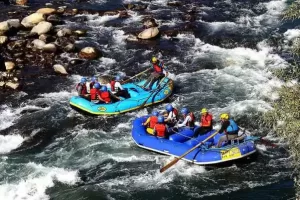
White River Rafting: Blessed with beautiful and romantic rivers and lakes, Ganderbal is the best place for enjoying river rafting between August and September. The mountain streams of river Indus (Sindh) is a major hot spots for white water river rafting. It the perfect destinations for beginners also.Cutting through various mesmerizing landscapes, deep gorges and mountains, the roaring indus rivers give ample thrill to rafting lovers. In fact water rafting tournaments are organised at the world-famous tourist destination Sonamarg every year, to boost the tourism industry of Kashmir valley.
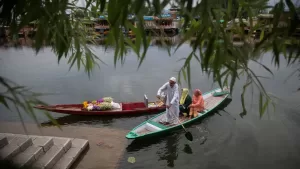
Skiing: One of the main attractions in Ganderbal for adventure seekers is skiing. With snow-covered peaks and slopes of Himalaya Mountain Range in the background, the district is blessed with world-famous Thajiwas glacier in Sonamarg which provides a great place for skiing.
Paragliding: Among the various adventure activities in Ganderbal, paragliding is one of the most popular ones. The view of the striking green meadows and the majestic valleys while gliding over them is a totally different experience. And gliding is the best way to witness this. Tourists can enjoy this aero sport in Sonamarg.
Angling and Fishing: With a network of rivers, lakes and streams, Ganderbal is a paradise for angling and fishing. It is common to see people engaged in this interesting activity in the entire state. Fishing at river Sindh is a popular activity. The water bodies of the area are rich in both brown-trout and snow-trout. But necessary permits have to be obtained from the government of Jammu and Kashmir government before going for the activity.
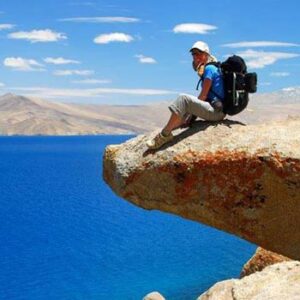
Mountain Climbing: Dotted with numerous mesmerizing Himalayan peaks such as Harmukh, Ganderbal is truly a wonderland for tourists interested in mountain-climbing.
Sonamarg :
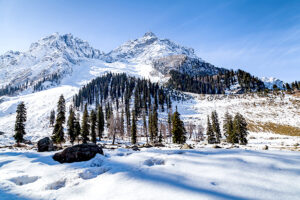
Sonamarg, which means ‘meadow of gold’ has, as its backdrop, snowy mountains against a cerulean sky. The Sindh meanders along here and abounds with trout and mahseer, snow trout can be caught in the main river. In late April when Sonamarg is open for road transport, the visitors can have access to snow which is furnished all over like a white carpet. Private vehicles are not allowed. Visitors have to hire taxi and it is controlled by taxi mafia. Ponies can be hired for the trip up to Thajiwas glacier a major attraction during the summer months.
The climate of Sonamarg is very bracing; but the rainfall is frequent though not heavy, except for two or three days at a time in July and August with fine spell in between. From Sonamarg, trekking routes lead to the Himalayan lakes of Vishansar Lake, Krishansar Lake, Gangabal Lake and Gadsar Lake, stocked with Snowtrout and Brown trout and Satsar, glacier-fed and surrounded by banks of alpine flowers.
Mansbal Lake
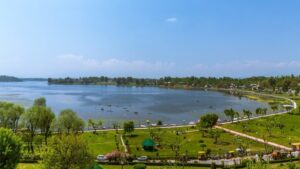
Manasbal Lake is located in Ganderbal District in the State of Jammu and Kashmir in India. The name Manasbal is said to be a derivative of the Lake Manasarovar. Lake is encircled by three villages viz., Jarokbal, Kondabal (also called Kiln place, is situated on the north-eastern side of the lake) and Ganderbal and is stated to be the deepest lake (at 13 m or 43 ft depth) in India.] The large growth of lotus (Nelumbo nucifera) at the periphery of the lake (blooms during July and August) adds to the beauty of the clear waters of the lake. The Mughal garden, called the Jaroka, (meaning bay window) built by Nur Jahan overlooks the lake.
Thajiwas Glacier
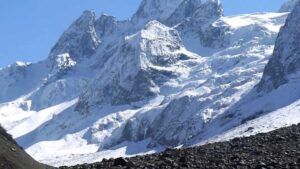
Thajiwas glacier at an altitude of 9,186 feet is a striking silvery scene set against emerald meadows and a clear blue sky. In summers, you can take a half-day hike to numerous waterfalls around this glacier. The road will be long and the journey hard but the captivating views make it worthwhile. On the way, have a friendly match with the local Gujjar kids who are almost always ready for a friendly snowball fight!
